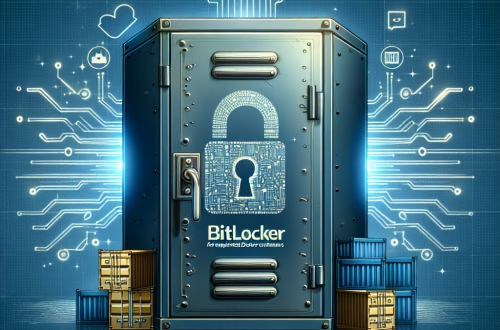BitLocker Keeps Asking For Recovery Key Explained
BitLocker, a full-disk encryption feature in Windows, may prompt users for a recovery key when it detects potential security risks or system changes. This occurs when BitLocker cannot verify the integrity of the system or access the encryption keys stored in the Trusted Platform Module (TPM). Common triggers include hardware changes, firmware updates, incorrect BIOS settings, or failed authentication attempts. The recovery key is a 48-digit numerical code that ensures access to encrypted data when normal decryption methods fail.
What This Means for You
- Immediate Impact: You may be locked out of your system or data until the recovery key is entered, causing downtime and potential workflow disruptions.
- Data Accessibility & Security: Ensure your recovery key is securely stored in multiple locations, such as a Microsoft account, USB drive, or printed copy, to avoid permanent data loss.
- System Functionality & Recovery: Regularly check system settings, such as TPM and BIOS configurations, to prevent unnecessary recovery key prompts.
- Future Outlook & Prevention Warning: Proactively monitor system changes and maintain a backup of your recovery key to mitigate future access issues.
BitLocker Keeps Asking For Recovery Key
Solution 1: Resetting the TPM
If BitLocker keeps asking for the recovery key, the Trusted Platform Module (TPM) may need to be reset. The TPM stores encryption keys, and any changes to it can trigger BitLocker’s recovery mode. To reset the TPM, follow these steps:
- Restart your computer and enter the BIOS/UEFI settings (usually by pressing F2, F10, or DEL during boot).
- Locate the TPM settings and clear or reset the TPM module.
- Save changes and exit the BIOS/UEFI settings.
- Upon restart, BitLocker may prompt you to re-enable encryption. Use the recovery key if necessary.
Note: Resetting the TPM may require administrative privileges and could affect other security features.
Solution 2: Using the Recovery Key
If BitLocker prompts for the recovery key, you can unlock your system by entering the 48-digit code. Here’s how:
- Locate your recovery key. It may be stored in your Microsoft account, a USB drive, or a printed document.
- On the BitLocker recovery screen, enter the recovery key when prompted.
- Once unlocked, ensure BitLocker is properly configured to avoid future prompts.
If you cannot find the recovery key, contact your system administrator or use Microsoft’s recovery key retrieval tool if the key is linked to your Microsoft account.
Solution 3: Advanced Troubleshooting
For persistent issues, advanced troubleshooting may be required. This includes checking system logs, updating firmware, and verifying BIOS settings. Follow these steps:
- Open the Event Viewer and check the BitLocker logs under
Applications and Services Logs > Microsoft > Windows > BitLocker-API. - Update your system’s firmware and BIOS to the latest version.
- Ensure the TPM is enabled and properly configured in the BIOS/UEFI settings.
- Run the
manage-bde -statuscommand in Command Prompt to check BitLocker’s status and encryption details.
These steps can help identify and resolve underlying issues causing the recovery key prompt.
Solution 4: Data Recovery Options
If you cannot access your data due to BitLocker’s recovery key prompt, consider data recovery options. Here’s what you can do:
- Use a backup of your recovery key to unlock the drive.
- If the recovery key is lost, use third-party data recovery tools designed for BitLocker-encrypted drives.
- Contact a professional data recovery service for assistance.
Always ensure you have a backup of your recovery key to avoid permanent data loss.
People Also Ask About
- Why does BitLocker keep asking for the recovery key? It may be due to hardware changes, TPM issues, or incorrect BIOS settings.
- How do I find my BitLocker recovery key? Check your Microsoft account, USB drive, or printed documents.
- Can I disable BitLocker to avoid recovery key prompts? Yes, but this will decrypt your drive and reduce security.
- What happens if I lose my BitLocker recovery key? You may lose access to your encrypted data permanently.
- How do I reset the TPM for BitLocker? Access the BIOS/UEFI settings and clear or reset the TPM module.
Other Resources:
Suggested Protections
- Store your BitLocker recovery key in multiple secure locations.
- Regularly update your system’s firmware and BIOS.
- Enable TPM and ensure it is properly configured.
- Monitor system changes that may trigger BitLocker recovery mode.
- Maintain regular backups of your data.
Expert Opinion
BitLocker’s recovery key prompt is a critical security feature designed to protect your data from unauthorized access. While it can be inconvenient, it underscores the importance of proper system configuration and key management. Proactively addressing potential triggers and maintaining secure backups of your recovery key are essential for seamless system access and data protection.
Related Key Terms
- BitLocker Recovery Key
- Trusted Platform Module (TPM)
- Full-Disk Encryption
- BIOS/UEFI Settings
- Data Recovery
- System Security
- Encryption Keys
*Featured image sourced by Pixabay.com





